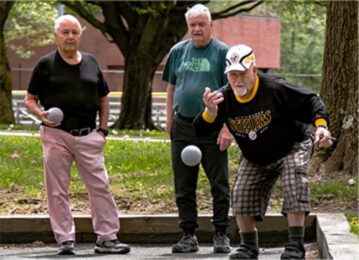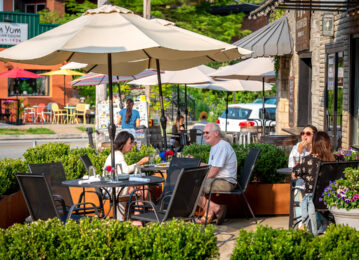Check out what’s
Trending

Holiday Events in Mt. Lebanon

If you aren’t sure where to look for specific information on our website, please search here using keywords to learn anything from what day trash pick-up is, how to license your pet or plan a block party to how to volunteer in the community or start a business here.
Mt. Lebanon maintains an inclusive, safe, accessible, connected, equitable, and resilient multimodal transportation network that enables people to move through the community and access chosen destinations via one’s chosen mode.
To create the change it desires, the municipality shall work toward improved safety, comfort and convenience for users of all modes of transportation, but with special emphasis on the needs of pedestrians.
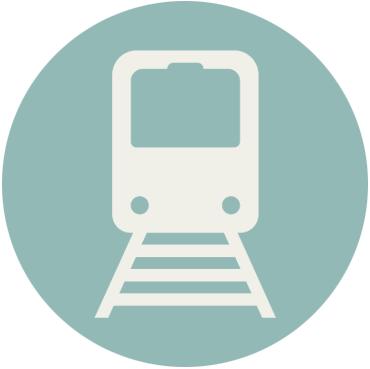
Organize mobility and access planning, design, construction, and advocacy to ensure consistency with and support of the municipality’s complete streets policy (CSP).
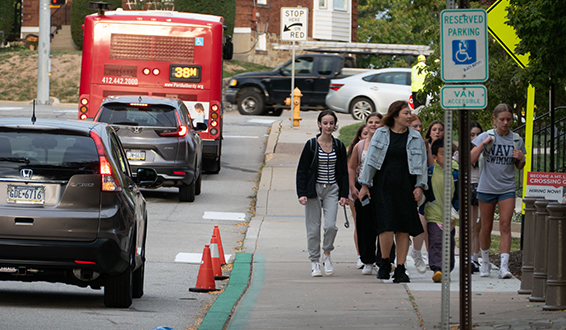
a. Develop the process by which improvement projects follow directives from the complete streets policy when they impact transportation Per the adopted policy: “3.1. All municipal-owned new construction, reconstruction/retrofit, resurfacing, repaving, restriping, and rehabilitation transportation projects in the public right-of-way including, but not limited to, streets and all other connecting pathways should be designed, constructed, operated, and maintained so that all modes of transportation allow all users to move safely, comfortably, conveniently, and independently.”
Status: Started
b. Update the street types, definitions, and minimum street design standards in the Subdivision and Land Development Ordinance to reflect complete streets policy goals and PennDOT guidance. Continually explore technological improvements that access and make local government more transparent. Include these points:
– See PennDOT Publication 13M (DM-2), Table 1.2 for roadway typologies. Per PennDOT Annual Average Daily Traffic (AADT) data from 2021, there are no Regional Arterial roadways in Mt. Lebanon. Seek to maintain this.
– Strive to keep volumes below 25,000 AADT and speeds below 25mph on all roads in Mt. Lebanon to support safety goals. (Likelihood of death from crashes increases with speed; those risks double with SUVs and trucks.)
– Update street type definitions to reference AADT rather than Average Weekly Daily Traffic (AWDT); AADT is the standard and weekday counts are less reliable post-pandemic.
– Update the minimum street design standards for consistency with PennDOT Publication 13M (DM-2) and 2010 ADA Standards for Accessible Design.
Status: Started
c. Update the Neighborhood Traffic Management Program to ensure consistency with the goals of the CSP and PennDOT guidance, devising traffic solutions on a neighborhood level for methodical implementation.
– Consider all roads eligible and update the Traffic Data Criteria and points system; at minimum, match the Project Ranking System in Figure 1 of PennDOT Publication 383, Pennsylvania’s Traffic Calming Handbook.
– Ensure that all transportation projects consider impacts on the Mt. Lebanon network as a whole.
– Rename this program to better communicate its goals (e.g. Neighborhood Traffic Calming Program). The Institute of Transportation Engineers describes traffic calming as “The combination of mainly physical measures that reduce the negative effects of motor vehicle use, alter driver behavior, and improve conditions for non-motorized street users.”
– Create clear, simple public information explaining the process to make it easy for people to participate.
– Consider ways to streamline the process of approval to reduce time and subjective decision-making.
Status: Started
d. Ensure that pedestrian detours are required and enforced when construction or other activities impact walkways. STATUS: ONGOING
e. Update the Subdivision and Land Development Ordinance to require multimodal transportation impact analyses rather than traffic impact studies.
Status: RFP issued for Zoning Ordinance and SALDO Update
STATUS: STARTED
f. Consider additional street typologies for both street reconstruction projects and intersection enhancement projects. These could include but would not necessarily be limited to one.
Status: Active Transportation Plan currently in progress
STATUS: In Progress
Develop a plan that identifies strategies and prioritizes investment to create complete active transportation networks in Mt. Lebanon, potentially in cooperation with neighboring municipalities.
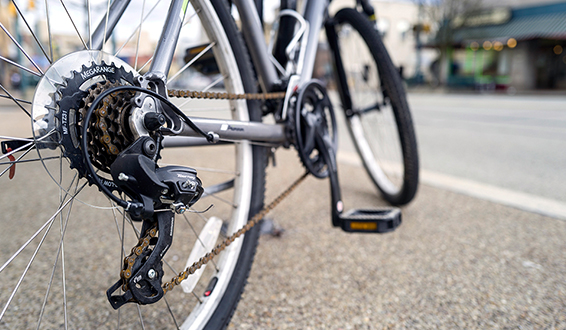
a. Establish the terms of a project-based partnership with participating neighboring municipalities (including funding).
Status: Complete
b. Develop a request for proposals document and define a selection process. This includes drafting a scope of work to include in the RFP, referencing PennDOT’s “How-To Guide for Developing Active Transportation Plans,” or Ohio’s “Active Transportation Plan Development Guide.” Note that this comprehensive plan has revealed the following priorities:
– All transportation planning and design must consider impacts on the Mt. Lebanon network as a whole.
– People want a complete sidewalk network.
– People want more traffic management (i.e. calming).
– Parents want safe routes to schools.
– People support creating bicycle infrastructure in the context of a complete streets approach that ensures access for all modes.
Status: Complete
c. Develop and adopt an Active Transportation Plan.
Status: Active Transportation Plan currently in progress
Status: In Progress
Pursue strategies to maximize sidewalk availability in Mt. Lebanon.
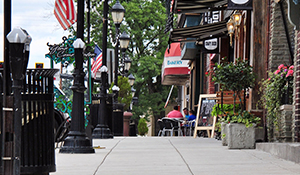
An updated sidewalk expansion policy was adopted on August 22, 2023.
a. Review the sidewalk expansion policy (SEP) for consistency with the complete streets policy. Per the adopted policy: “1.1. The Municipality shall develop a safe, comfortable, reliable, efficient, integrated and completely connected multimodal transportation network providing access, mobility, safety, and connections to all users.”
Status: Complete
b. Review the sidewalk expansion policy’s scoring methodology for consistency with its purpose, “to enhance Mt. Lebanon’s walkability,” and with the complete streets policy. Note that the sidewalk expansion policy (section 1.1) prioritizes streets “proximate to public assets and common community destinations,” and all affected property owners agree to the terms.
Status: In Progress
c. Promote the incentives that the municipality offers (i.e., municipal cost-sharing) to install or repair residential sidewalks.
Status: Ongoing
d. Create clear, simple public information explaining the process to make it easy for people to participate.
Status: In Progress
e. Consider ways to streamline the process of approval to reduce time and subjective decision-making.
Status: Started
f. Maintain or upgrade existing pedestrian thoroughfares that enhance the connectivity and walkability of neighborhoods. Consider expansion of pedestrian connections where opportunities exist on paper streets or unopened rights-of-way.
Status: Woodland Drive Sidewalk Expansion Project
Status: In Progress
Pursue strategies to protect and promote safe routes to school in Mt. Lebanon.
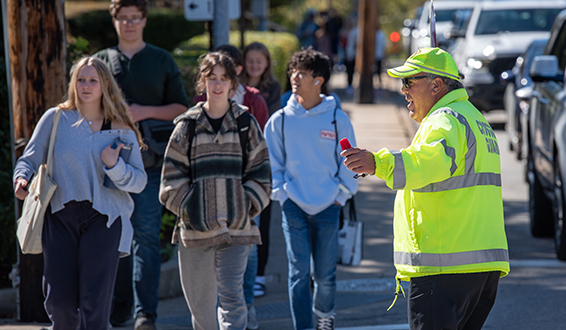
a. Reorient Safe Routes to School (SRTS) efforts to the commonly used definition: “an approach that promotes walking and bicycling to school through infrastructure improvements, enforcement, tools, safety education, and incentives to encourage walking and bicycling to school.”
Status: Not Started
b. Utilize the active transportation plan to identify appropriate safe school walking routes and safety improvement projects where needed along those routes.
Status: Active Transportation Plan currently in progress
Status: Started
c. Establish an ongoing collaboration with the Mt. Lebanon School District to develop and implement safe routes to school walking programs throughout the year, in accordance with best practices.
Status: Ongoing
d. Consider zoning amendments to require land development plans on sites of 1 acre or larger to contain walking easements and trails to enable pedestrian connections.
Status: RFP issued for Zoning Ordinance and SALDO Update
Status: Started
Plan and advocate for safety improvements to Washington Road.
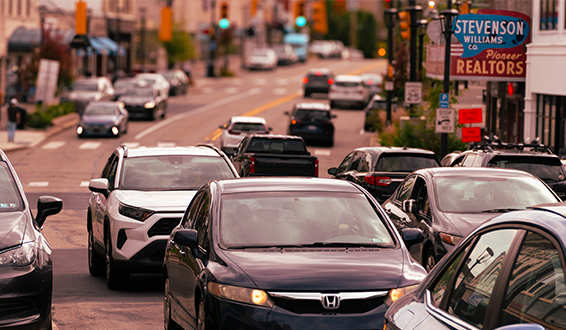
Washington Road currently has two to four travel lanes and zero to two parking lanes.
a. Coordinate Washington Road/West Liberty Avenue (PA-19) planning, design, and advocacy with the Borough of Dormont.
Status: In Progress
b. Participate in the SPC-led road safety audit for Washington Road from McFarland Road or Potomac Avenue to Cochran Road.
Status: Complete
c. Utilize the completed comprehensive plan as well as the RSA process and active transportation planning to build the case for a safer Washington Road.
Status: In Progress
d. Plan and advocate for reducing the automotive travel lanes on Washington Road in Uptown, in order to create more predictable automobile travel patterns and reduce the distance for people crossing the street.
Status: Started
e. Advocate for road diets to consider potentially reducing automotive travel lanes and creating multi-modal improvements on other four-lane thoroughfares not owned by the municipality, including Bower Hill Road, Connor Road, Gilkeson Road and Washington Road between Cochran and Gilkeson.
Status: Not Started
Explore solutions for safer and more efficient curb utilization in the Uptown business district.
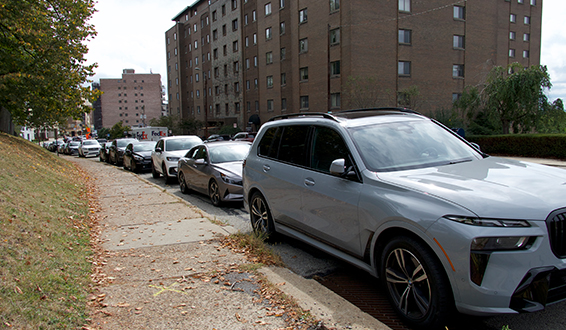
a. Examine on-street parking behavior and consider management changes to achieve consistency with best practices and a desirable turnover rate for available uses.
Status: Not Started
b. Consider the creation of new types of spaces or zones designed for very short-term occupancy.
Status: Not Started
c. Consider the creation of new types of spaces or zones for outdoor dining or passive recreation.
Status: Not Started
d. Consider additional or new revenue-positive enforcement tactics.
Status: Not Started
Support the implementation of mobility and access goals in the annual Capital Improvement Program.
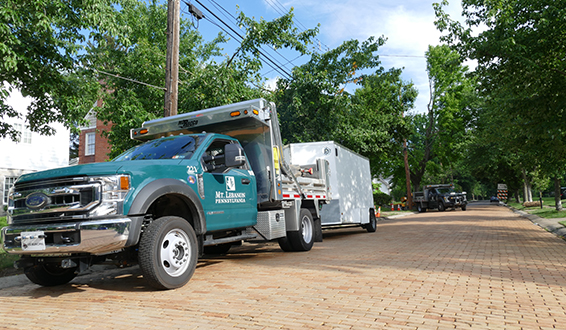
a. Budget for an active transportation plan.
Status: Complete
b. Create a new line item for active transportation projects arising from the plan that cannot be incorporated into ongoing complete streets and maintenance work.
Status: Not Started
c. Increase the annual paving and striping budget 3.5% to allow for complete streets, traffic calming improvements and repairs to historic brick streets.
Status: Started
d. Budget to maintain an average Pavement Condition Index (PCI) of 60 or greater.
Status: Ongoing
e. Increase annual sidewalk repair and installation budget to allow for complete streets and safe routes to school improvements.
Status: In Progress
f. Consider setting aside funds to serve as a local match for improvements to Washington Road.
Status: Not Started
g. Amend the sections of the ordinance that prohibit the Commission from using debt or raising taxes to pay for street reconstruction. Given strong public support for elevating pedestrian priority and implementing the complete streets policy, enabling the Commission to consider using these mechanisms to finance implementation of the complete streets policy is appropriate.
Status: Not Started
Check out what’s

Holiday Events in Mt. Lebanon
